Part 2⁄7 Why do some mosques face a spot in central Arabia and not Mecca? Who was General Hajja, and why did he develop the Between Qibla?
Transcript
Hello, I’m Dan Gibson, and welcome to the second video in the series The Qibla Story. In this, and the first video, we looked at the Qibla: What is it? What evidence do we have that Muslims originally prayed towards Jerusalem? “There is evidence in books, but there is no archaeological evidence”, was their conclusion. The evidence in books was all written two to three hundred years after the Qibla change took place. Then we looked at the Petra Qiblas, and over 20 mosques that appear to face towards the city of Petra. Again, we’re doing an overview. If you want to look at exact things, if you want to study them, look at the Qibla Tool on the website, or go to the book Early Islamic Qiblas and look there. But the website is probably the most current - we’re trying to keep the most current information on the website. Although, it is hard because we keep getting emails, and discovering new things, and are checking things out all of the time.
Ok, now we’re going to come up to a chart that I have drawn and this looks at the time starting about 700 AD. Now, 700 AD is actually 81 A.H (after the Hijra); so we have jumped ahead 81 years into the history of Islam. Now, we’re going to pick it up around 70-100 AD, and we’re going to look at what happens. Because the Qibla suddenly splits into three different things that appear. So, we have the Petra (actually four, because we have the Petra Qibla), and they continue on. There are still mosques which are being built, even on into later dates. On my computer I’m going to start this up (so here we go) on the on the Qibla Tool. We can see that even into the 700-705 we have the Sana’a Mosque, and working with Al-Aqsa in 70, Um Walid 712, Khirbat al Mafjar 714, Anjar 714, and Qasr Al-Qastal 720, even Qasr Mushatta in 743, and so forth. So these (and I have some others that are, if you’ll notice here, there), just we don’t know about the century they were built in. We don’t know the exact date, but you can see that Petra continues on at least until 743. I would say, you know, we can safely say about 750 (s0 another 50 years), that mosques are being built that where the Qibla seems to face the city of Petra in southern Jordan.
But something else takes place. Let’s go back to our chart here, and you will see (as we’re coming down) the first thing that takes place, and this is the bit that gets everything going, and that bit is what we call the between-mosque. It all starts with the first name on the top of the list- 706 is Ḥajjāj, General Ḥajjāj and he builds a mosque. Now, Ḥajjāj, we have given his story (and other videos): He starts out as a schoolteacher; he graduates up; he goes off to Damascus; he becomes a leader in the bodyguard of the Hallaf; he makes his way up until he is actually appointed to go down to the city that is rebelling against him (we believe is the city of Petra); and he goes to the holy city. He still doesn’t destroy the city doesn’t, kill people in the sacred place… but, “Please go down and put the rebellion down”, and so he goes down there. But he writes, “Because I need permission”, and he gets permission. He goes in, and there’s a bloody battle that takes place between General Ḥajjāj and the Ibn Zubayr, and others, who are protecting the holy city. We see this all according to the Qibla, we see this all taking place in the city of Petra. In the end, General Ḥajjāj is victorious. He has put down the rebellion, but it’s a bloody affair. People are killed in the sacred area. The Ka’ba building gets destroyed (from a Manjanik - which is throwing these rocks). So, the city is in a miserable state. Ḥajjāj goes in, and he’s rather disappointed (least that’s the way I take it) from the city because it’s full of idols, it’s full of temples to other gods, and it’s full of ruins. In the middle of all of this is the Ka’ba, is now destroyed.
During that war Ibn Zubayr apparently grabs the Black Rock, and he moves it down to the deserts of Saudi Arabia. He goes out in the desert, probably to a place where there was a valley, a well into it, and his people go there, and they settle there. Because they have the Black Rock, they begin to pray. They continue. They are religious. They are seeing themselves as defending the religion of Islam. Eventually, they began to put that rock into a Ka’ba building. They begin facing it, and then you begin getting the different - how will I describe this? So, the records of different pilgrimages taking place at the same time in Islamic history. Very unique, that there would be several different pilgrimages, several different people leading them, and it seems to us - from looking at the Qibla directions we see in archaeology - that this is taking place in different places.
So, you have a rival city, and the very first city was what we call Petra today (that was called different things). We have a paper you can look at, all the different names the city of Petra goes by. We even have some people who have recorded that that city also would go by the name of “The Mother of All Cities” (was one of them). That’s in the Petra Scrolls (which are books we’ll look at in another series). That it was called many different interesting names. It was also called the “City of Mecca” by some of the people who lived there, especially by the pagans who were in the city. It was what I would call, “Mecca number one”. The Romans called it Petra. It was also called, “The Mother of All Cities”. There are other names that were used by them. So we can identify this. But it was also called the “City of Mecca”.
Well, once General Ḥajjāj had destroyed the city, then he went on, and he went down to Medina and he destroyed a lot of things there, and set up new governors. He ended up going back over into Iraq, and there he married the daughter of the Caliph. So he’s now the son-in-law of the Caliph, and he has given the control, the eastern command (so all of the eastern part of Arabia and over into Iraq), he is put in control. So there are the Caliphs the top. He has several men underneath him who are leading different sections of the Empire, and Ḥajjāj is there. Ḥajjāj decides to build a monumental mosque, a Great Mosque, where he would pray at, which would be his mosque, and it would be known as his mosque. So, he begins to build this mosque.
Now, the question comes here of dating. You look at the list that I split up - I’ve got 706 for this mosque. I’m just going to pull down on my thing here, but actually it says here, 706 construction was started. But actually, the construction started in 702. I’m just looking at my timeline in the back of Quranic Geography, it’s a very handy timeline. So it’s 702, Ḥajjāj begins to build this mosque. This is back in 83 after the Hijra, so this is not long after the war. He begins to construct his mosque, and he chooses a very interesting Qibla. He doesn’t face towards Petra, as all of the mosques had done so far. He doesn’t face towards Mecca, which is the new direction that is being offered, and where people should pray to. He chooses a different location, and he calls it the Wasit mosque. Wasat in Arabic stands for “between”, or “the middle”, “the middle or the between”. So, it’s between two positions, or into the middle of these. Depending on the word here, the word can be used as either way. It is the “middle one”, it is the “between one”. So, he has this between-Qibla that he sets, and he points it between the two. That’s very interesting. That mosque is completed in 706 and he has this one, Al Walīd (the Caliph), allows him to do it. Remember this is his (the Caliph’s) son-in-law, who’s a very powerful military commander at this time, and so he allows his son-in-law (Ḥajjāj) tip to point his mosque towards the middle one.
Well, that starts something. You will see in these three columns here that we can’t find the first mosque that pointed to Mecca in Saudi Arabia. We don’t know, we can find one in727 that points there. Not long after 730, and the Amman citadel, the palace there, it chooses a Qibla that is towards Mecca. A few years later the Mosque of Mansour (which the Abbasids build over in Baghdad) faces towards Mecca. Then the list goes on, and after that, they started out infrequently. They get more frequently until Mecca is the choice everywhere. What is interesting is this between-thing, because obviously they start building other mosques at this time, and during the time that general Ḥajjāj was in control (this is over a 66 year period), mosques are built to face the between-position and we can choose that (over here on our map), if we can look at the between-position (I’ll just flash the picture up), it gives us the number of those mosques. There’s a bunch of them here; I haven’t counted them, so I go… one two three four five six seven eight nine 10 11 12 13 14 15 16 17 18 19 20 21, I get more than 20. So, if more than 20 face Petra, now we have more than 20 mosques that face the between-position. They’re all built in a 66 year period.
Now there’s a whole slew of them being built right at the beginning. In those first few years, many of these mosques are being built, many of them are being constructed. I have the dates of their completion up here, but this is not when they were begun, but rather the completion of these mosques. So, some of them were built over a 10-year period or more. As we look at this, you will notice in 715 General Ḥajjāj dies, but the mosques are not all completed. Over the next few years many of these mosques are completed, maybe even begun and completed. Obviously, the between-position was quite well accepted in the Eastern Empire that Ḥajjāj was in control of. In the end, however, the between-Qibla was abandoned after Ḥajjāj dies, and different things happen. So it disappears, and the Qibla has been changed. Now, later historians who are writing about this, and this they’re not very much later, because Islamic rule in 750 (remember we said 50 years), in 750 the Abbasid rule begins. Now the Abbasids take over. Now mosques point to Mecca in Saudi Arabia. We don’t have any mosques before this time that (well, we have a couple so I’ll just back up)… we have a couple of mosques before this time who point, under the Umayyad time, points to and prays towards Mecca in Saudi Arabia, including that mosque on the Amman citadel, the palace there. So it’s not the mosque, it’s the palace, the whole building is oriented towards Mecca in Saudi Arabia. There is some, under the Abbasids, as they’re there breaking up (not the Abbasids, sorry, under the Umayyads) and their theology seems to be breaking up, there are people facing different directions at the end of their control.
When the Abbasids come in, this they step down pretty hard on this whole thing, and they tried to clean it up. The between-mosques disappear, and the other mosques start to face Mecca in Saudi Arabia. Even places like the Wasit Mosque, the between-mosque, they actually go in and destroy this mosque! Knock it all down, level the ground, but they leave the foundation. They level the ground over and above it. You knock all the buildings, level up, and they rebuild the mosque facing Mecca in Saudi Arabia. It’s not until the 1930s that archaeologists are digging, and they are looking at this mosque, at the ruins of this early mosque, and they discover underneath it is a previous mosque. Its Qibla points somewhere out into the middle of Saudi Arabia. Without realizing it, it becomes evident this is a between-mosque. There’s a lot of arguing at the first, “This must point to Jerusalem”, and you’ll find a lot of articles talking about, “This mosque, the early mosque pointed to Jerusalem”, and so many people measured it and tried. It does not point to Jerusalem. It doesn’t even point to Petra. It points to a between-position.
So, I’m the one who came along some years ago, lined this up, and said, “Look, there is a between-position.” It started with the between mosque and there is even records of the threat written by the Abbasids a few years later, saying, “One of the great misdeeds of Caliph Walid 1 and his family”, referring to his daughter and his son-in-law General Ḥajjāj. One of their great misdeeds was the setting of the between-Qibla, or the Wasit Qibla. This was one of the great misdeeds of this Caliph. So it’s pinned on Al Walid - he’s the one who allowed all this to happen during his reign (which actually brought down the Umayyads). In the end, they’re disagreeing with each other and this gave the rise to the Abbas family, who came from Humeima, who had their qasr, (which is near Petra), they had the people from Muhammad’s family with them, they show up and they fight, and they take over and say, “We are the real family. We are based on the real thing”, and so forth. But something happens and (I’ve just I’ve got it over here, I’ll glide it over) I want you to notice some events that take place here, just beforehand. In 708, to go back here to when we’re looking at the between-mosque. But in 708, that’s when the miḥrāb is introduced. That’s the little circle (what do you call it…arch whatever you call it, it’s not an arch) that shows the direction of Prayer. So when you’re in a mosque, you’re looking, there’s a niche cut into the wall (a round one), and people face that, saying, “That’s the Qibla direction.” Before this was just a straight wall; it’s not until 708.
So, I think, back then, there is already a question of, “Should we pray towards Mecca?” They’re not rebuilding mosques in 708, they’re introducing the miḥrāb, and they’re putting this niche into the walls of mosques. The first one that’s done is in Medina, even though the general there that (I mean the governor there) is not happy with what they’re doing. They put the niche, they changed the Qibla wall, put a niche into it and show that they’re praying towards Mecca. So, we have Mecca on one side we have Ḥajjāj with his between on the other and so that’s in 708, or 89 after to the Hijra. But mosques are still being built towards Petra at the same time (as I go down). Now, in 710 (that’s not very much later), 91 after the Hijra, Khalid al-Qasri is appointed as governor of the holy city. He’s very strict and he enforces unpopular views on people. It talks about this guy came along, and he changed things, he made things unpopular.
Khalid insisted that the Caliph’s interpretation of history and religion were correct. If there’s any question about history, or if there’s any question about religion, then the Caliph’s word stands. It’s almost setting him up like a pope, and when you have a question, he can stand up and speak and whatever he decides, whatever he says, that is what the religion agrees to follow. So, the Caliph at that point is put in charge of religion, and interpreting religion and history. Very, very important, because the Caliph is now taking the lead. He says what goes on. Before this, there were the religious community that would gather, and the scholars, and they would discuss things. There were different schools of thought, and different legal schools that had risen up with different teachings. But now, the Caliph is insisting he can interpret history and religion. Why history? Because there’s this confusion that’s going on - which direction do we pray? Mosques are pointing here, mosque are facing here, and so the Caliph says the final word. That’s when that idea is introduced. But Khalid al-Qasri, who is the governor of Mecca, he insists on this. So the Caliph is set up. At this very same time we start the 711 (now this is the next year), we have the start of the fight for Spain and north Africa. That’s when this whole thing begins.
All we’ve introduced so far is the introduction of the between-mosques and the introduction of the Mecca mosques. In the next video we’re going to look at, “What about the parallel mosques - where did that come from?” Actually, it’s not the next video! We have one more in between. We have a question about China, because there are some mosques that are being built in China. People argue, and scholars say it started too early, it couldn’t have happened. A next video might be quite short, but I want to share with you some of the things I’ve discovered chasing down the China angle. Then the following video will be about parallel on how did they ever end up with the Qibla that they did in Spain and North Africa.
This is Dan Gibson and we’ve been talking about the Qibla Story.
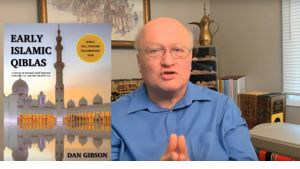
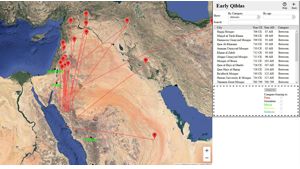
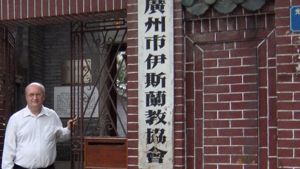
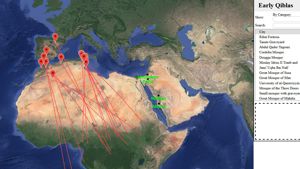

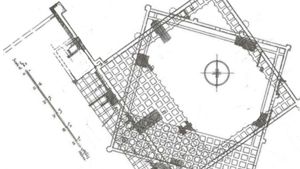
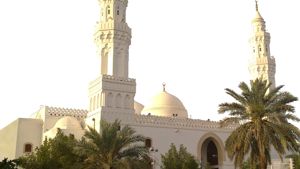
Page Discussion
Membership is required to comment. Membership is free of charge and available to everyone over the age of 16. Just click SignUp, or make a comment below. You will need a user name and a password. The system will automatically send a code to your email address. It should arrive in a few minutes. Enter the code, and you are finished.
Members who post adverts or use inappropriate language or make disrespectful comments will have their membership removed and be barred from the site. By becoming a member you agree to our Terms of Use and our Privacy, Cookies & Ad Policies. Remember that we will never, under any circumstances, sell or give your email address or private information to anyone unless required by law. Please keep your comments on topic. Thanks!